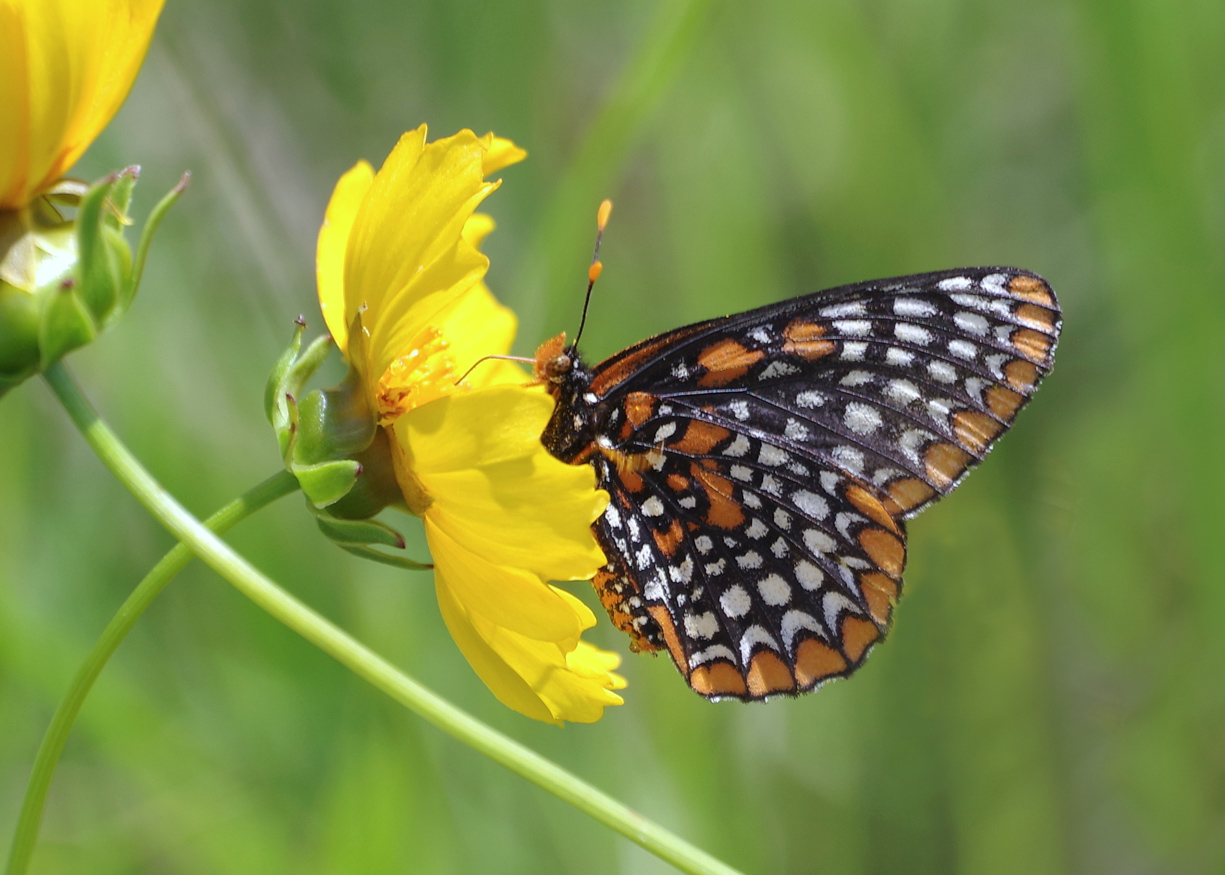
by Kate Redmond
Stirrings of Summer
Greetings, BugFans
Here are some of the bugs that the BugLady found in June, which was, overall, a hot and wet month (7.97” of rain at the BugLady’s cottage).
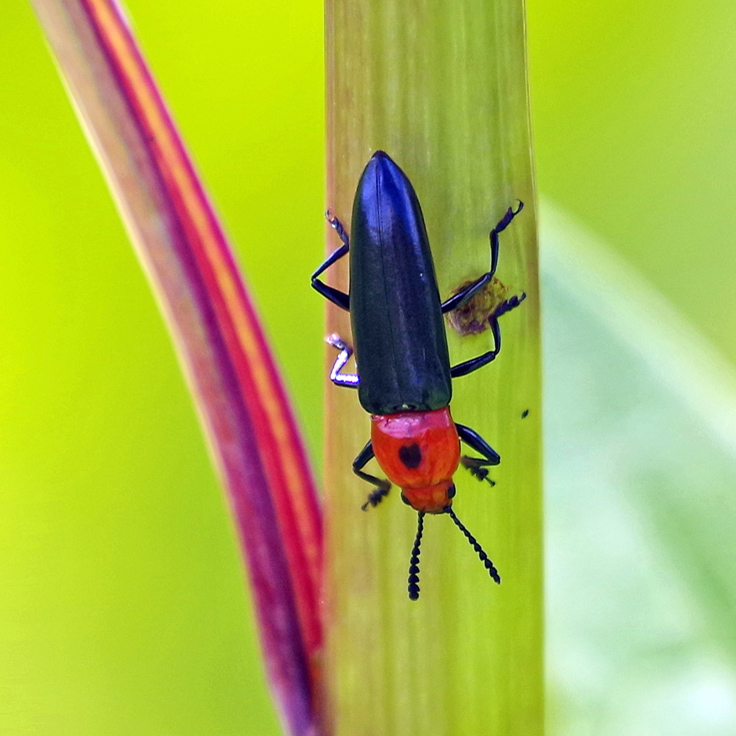
LIZARD BEETLE – the BugLady doesn’t know why these striking beetles are called Lizard beetles, unless it’s a nod to their long, slender shapes. She usually sees them in the prairie on Indian Plantain plants. The adults eat various parts of the plant, including pollen, while their larvae feed within the plant stems (the Clover stem borer is persona non grata in commercial clover fields).
According to the Encyclopaedia Britannica, many species of Lizard beetles “make squeaking sounds using well-developed stridulatory organs on top of the head.”
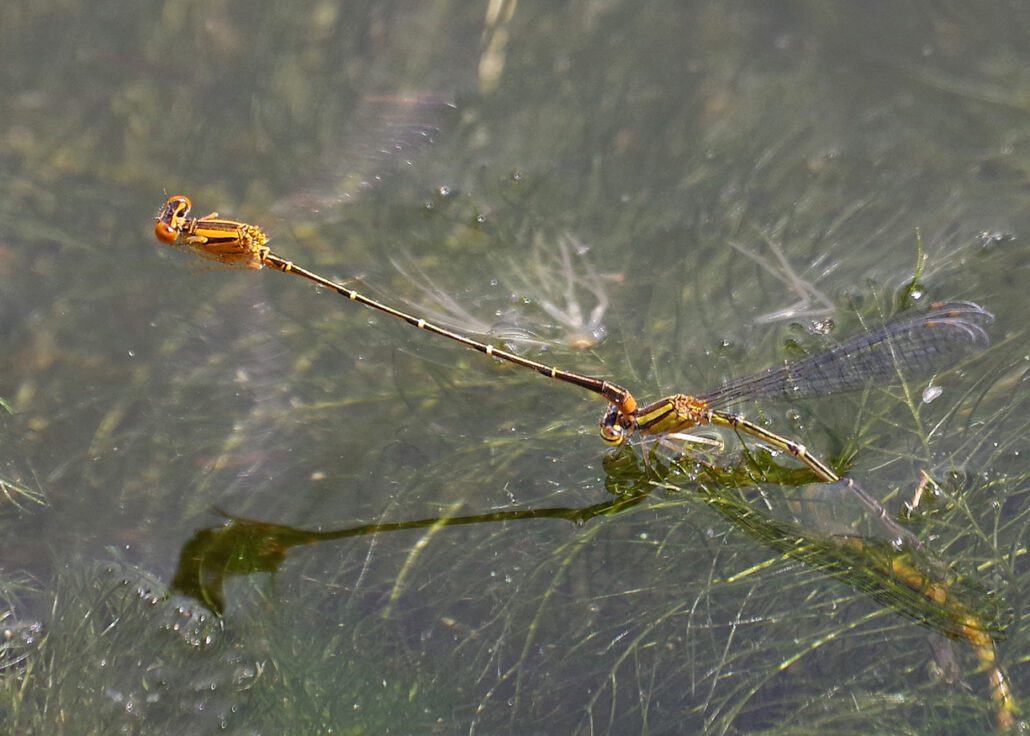
Two (counterintuitively-named) ORANGE BLUETS, ensuring the next generation. He “contact guards” her as she oviposits in submerged vegetation, lest a rival male come along and swipe her. When the eggs hatch, the naiads can swim right out into the water.
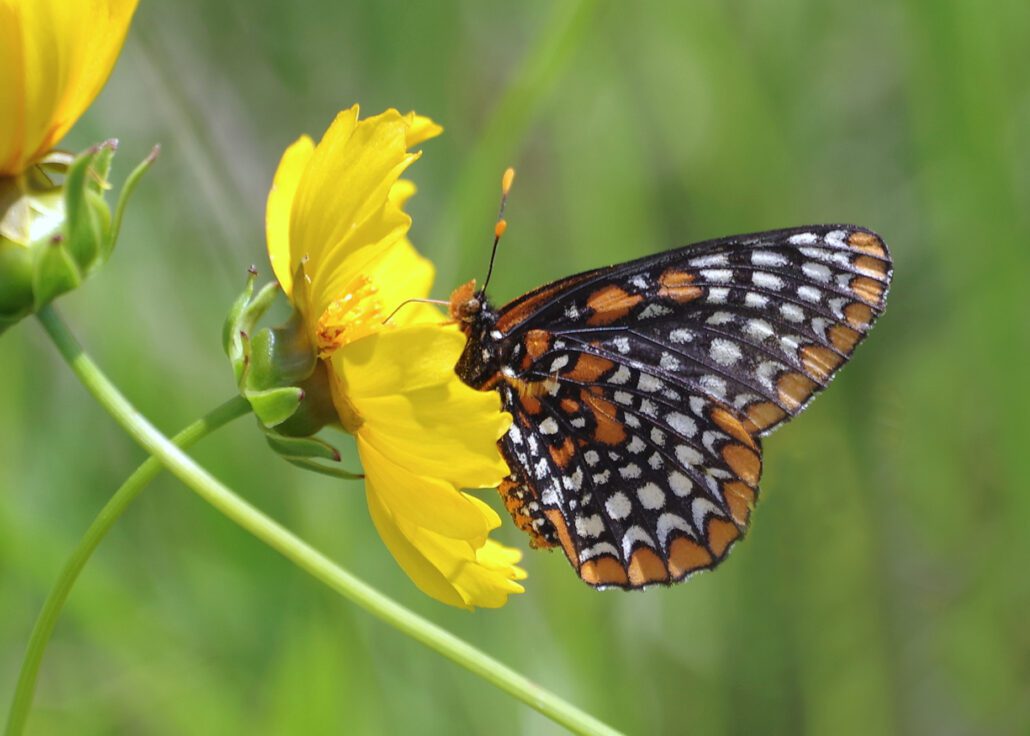
BALTIMORE CHECKERSPOT – the BugLady has seen more of these spectacular butterflies than usual this year. The caterpillars https://bugguide.net/node/view/206383 feed in fall on a late-blooming wildflower called Turtlehead (and sometimes broad-leaved plantain); turtlehead leaves (and plantain, to a lesser extent) contain growth-enhancing chemicals called iridoid glycosides that also discourage birds. The caterpillars tuck in for the winter and emerge the next year into a landscape empty of Turtlehead.
In spring, Baltimore Checkerspot caterpillars 2.0 feed on leaves of a variety of flowers and shrubs – the BugLady has seen them on goldenrod and on wood betony – and especially on leaves of the (doomed) white ash.
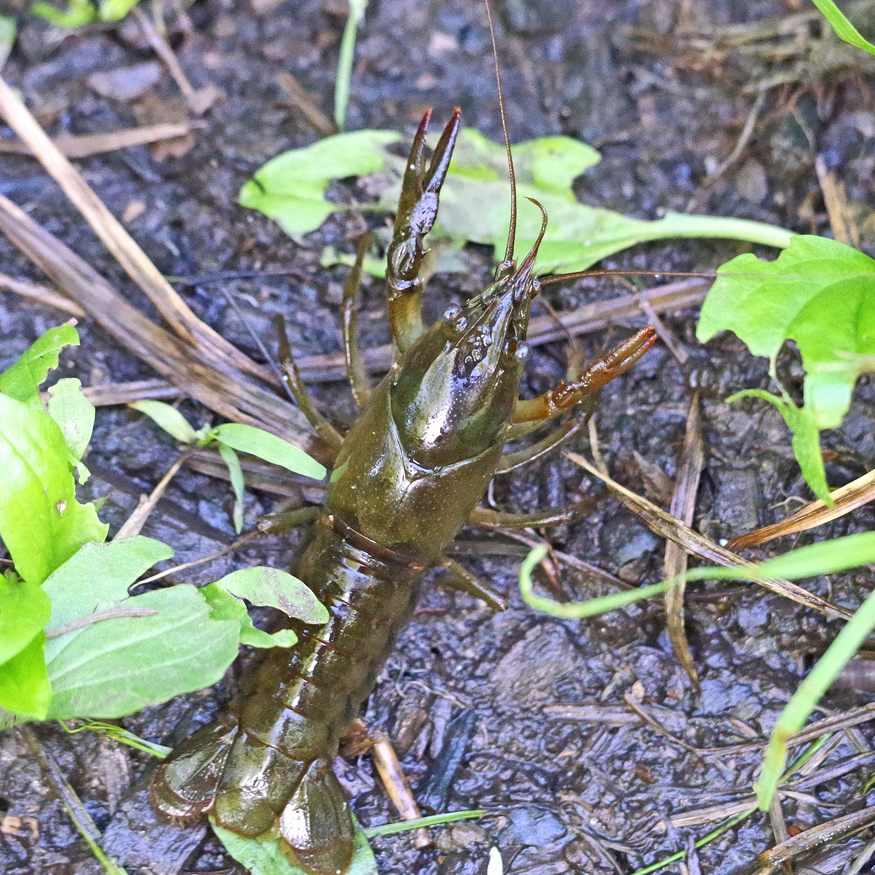
CRAYFISH – the BugLady came across this crayfish and its companion when all three of us were negotiating a muddy trail (so many muddy trails this year!). It waved its pincers at her to make sure she was terrified.
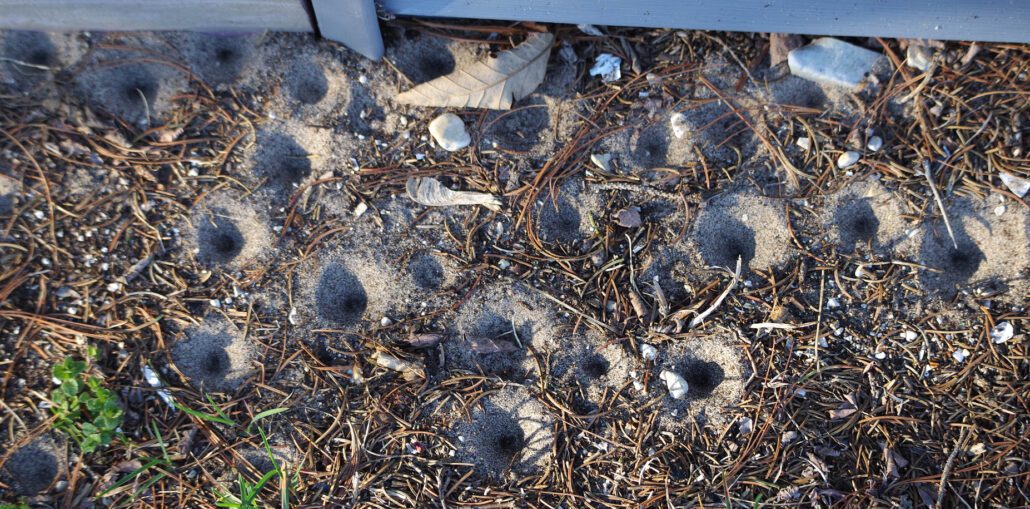
DOODLEBUGS (aka antlions) got going early this year – the BugLady found more than 100 excavations (pits) at the southeast corner of her house at the end of April, and more along the path leading to the beach. They’ve had a rough go of it – it doesn’t take much rain to ruin a pit, and it takes a day or so to repair one.
Doodlebug watchers sometimes catch a glimpse of pincers at the bottom of a pit, or of a doodlebug tossing sand around. The BugLady witnessed an ant going to its final reward, and found a pit with a small beetle in it, one with a box elder bug, and one with a beetle and a small jumping spider. She will look for the adults, which look kind of like damselflies, in August.
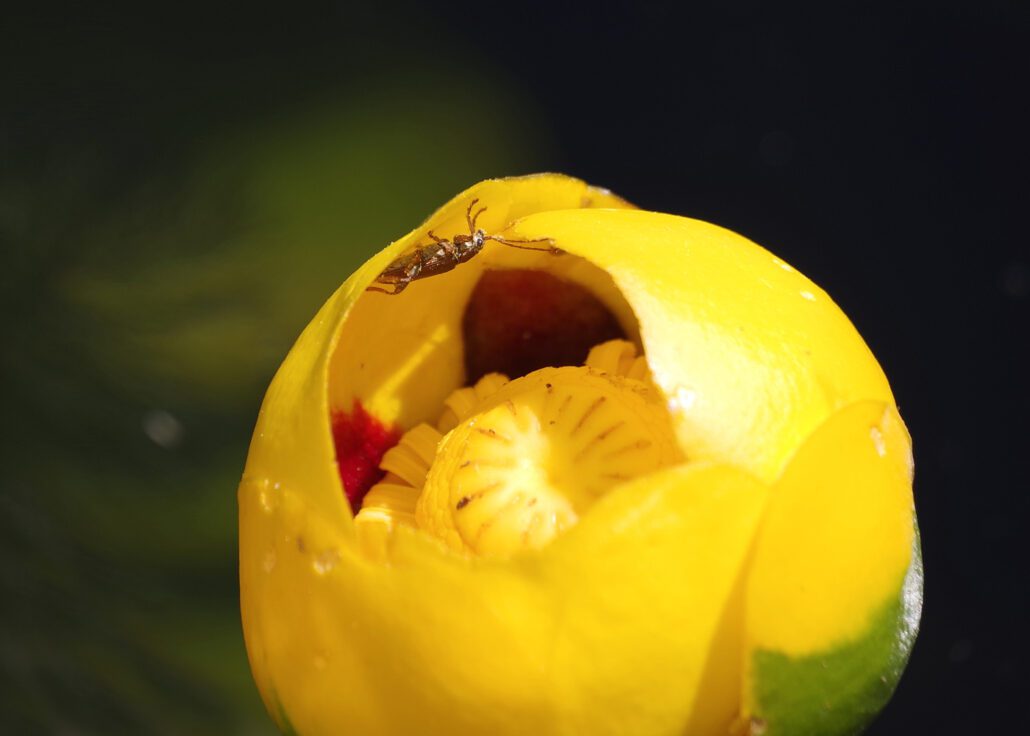
DONACIA – a golden beetle https://bugguide.net/node/view/2309637/bgimage on a golden flower.
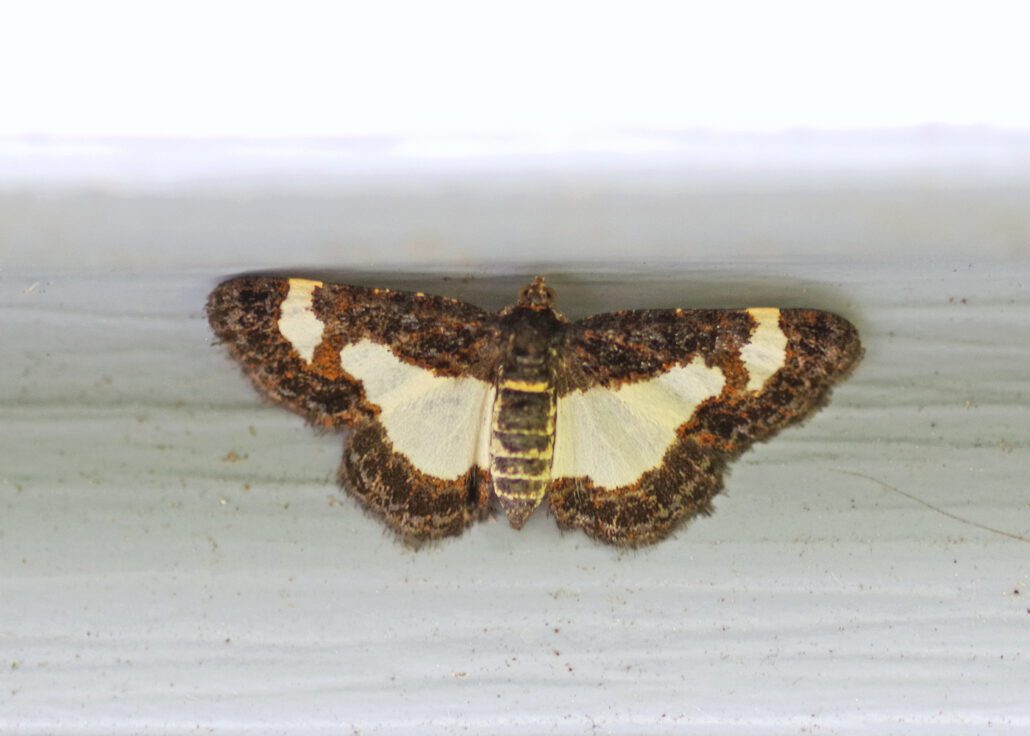
COMMON SPRING MOTH – the BugLady loves finding bugs she’s never seen before, especially when she doesn’t have to leave home to do it!! (She does get a little bewildered, though, when the “new” insect is named the “Common something” and she’s never seen it before). The occurrence of this one should be no surprise – its caterpillars feed on Black locust leaves.
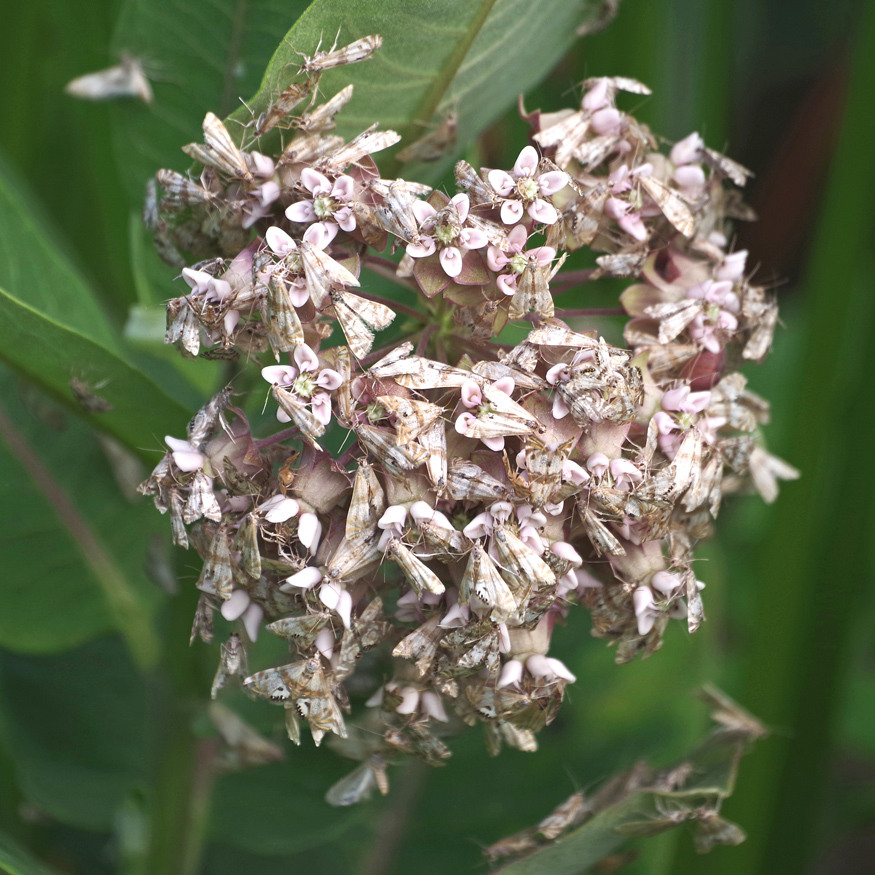
PETROPHILA MOTHS are dainty moths that are tied to water. The BugLady and BugFan Joan spotted mobs of moths on milkweed (yes, there’s a milkweed under there) on the bank of the Milwaukee River. “Petrophila” means “rock lover” – for that story, see this BOTW about a (probably) different species https://uwm.edu/field-station/bug-of-the-week/two-banded-petrophila/.
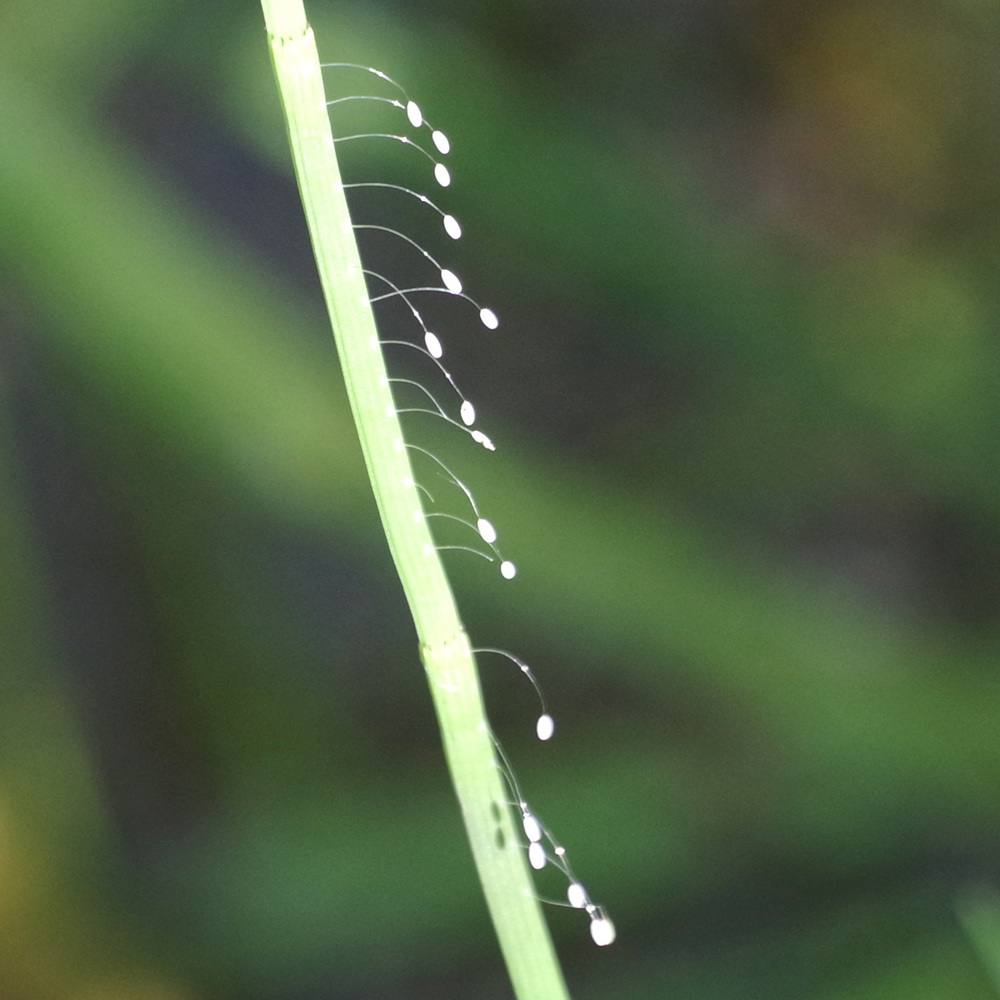
GREEN LACEWING EGGS – the BugLady wrote about Green lacewings and their eggs a few months ago, and she recently found this amazing bunch of tiny, glistening eggs. She has always associated Green lacewings with the end of summer. Guess not.
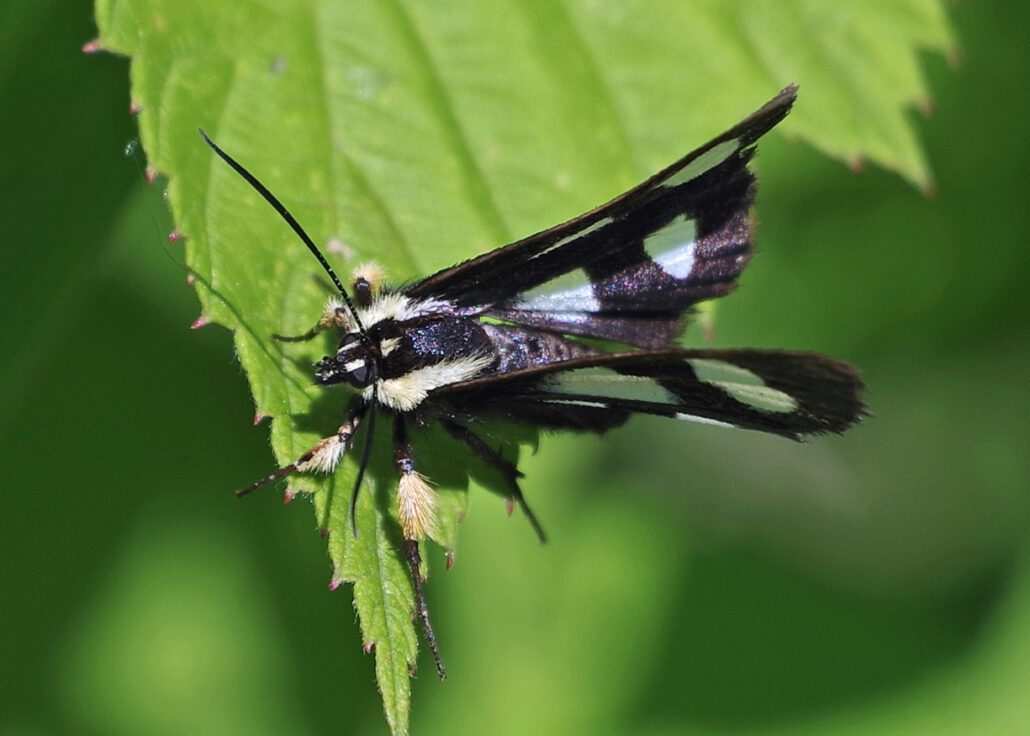
EIGHT-SPOTTED FORESTER MOTHS are small, spiffy, day-flying moths that are often mistaken for butterflies. The one that the BugLady found recently was not as gaudy as most – most have brilliant orange leg scales https://bugguide.net/node/view/2300226/bgimage. There’s a saying among Lepidopterists – the plainer the caterpillar, the more spectacular the adult. Forester moths seem to be an exception https://bugguide.net/node/view/156406.
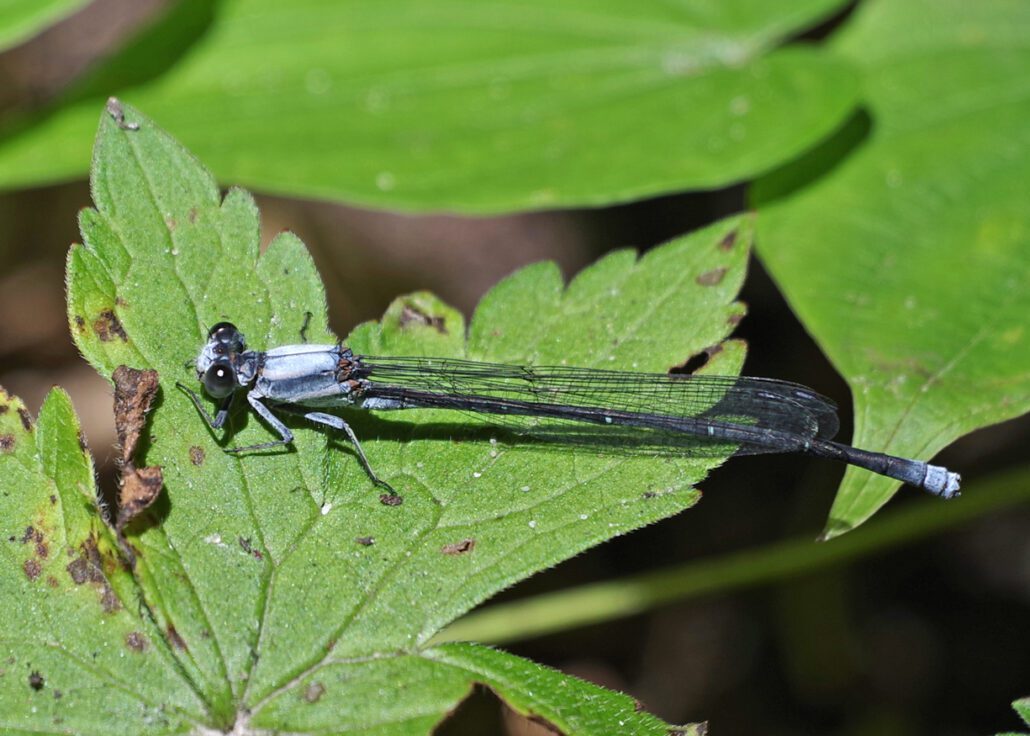
POWDERED DANCERS oviposit at this time of year in the slightly-submerged stems of aquatic vegetation, especially Potamogeton https://bugguide.net/node/view/737371/bgimage. They’ve been pictured here before. This year, the river is running high and fast – there are no mats of Potamogeton leaves with Ebony Jewelwings, American Rubyspots, Stream Bluets, and Powdered Dancers flickering above them. Do they have a Plan B?
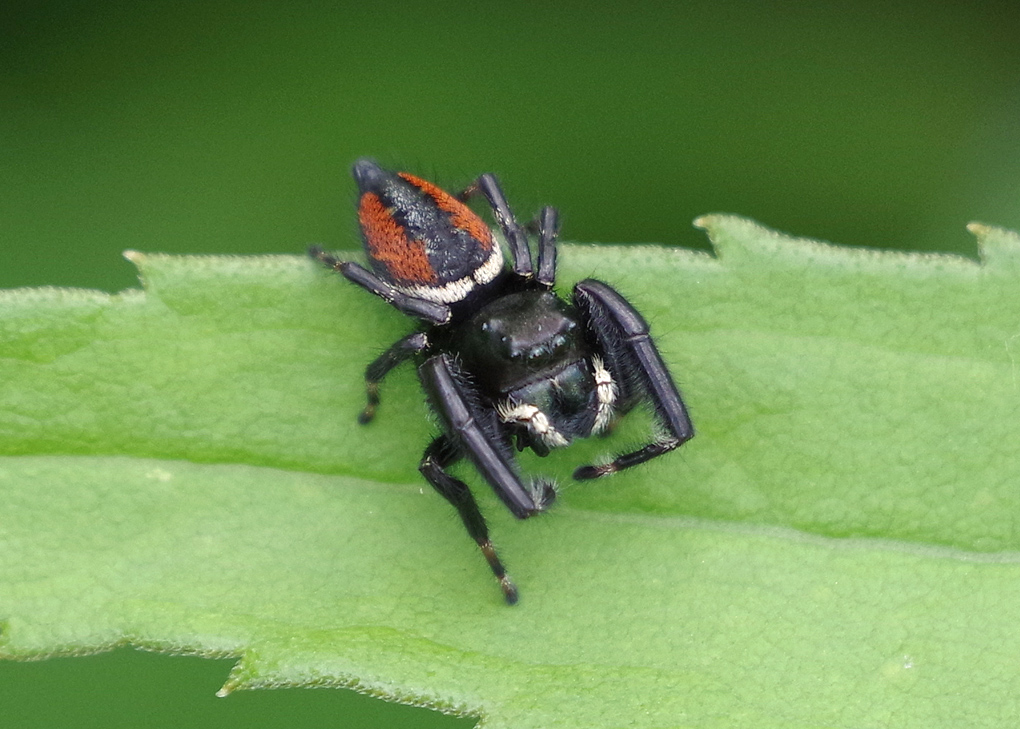

These two BRILLIANT JUMPING SPIDERS (aka Red & Black jumping spiders), a male and a female, were perched a respectful distance from each other on the prairie. Jumping spiders, as their name suggests, jump, and depending on species, can cover from 10 to 50 times their body length. They don’t spin trap webs, but they do spin a drag line while jumping to guard against mishaps. They hunt by day.
The great MObugs website (Missouri’s Majority) says that “By late July or August mating is on their mind. Males begin to compete with other males for the right to mate with nearby females. Larger males typically win these competitions which include loud vibrations and some unique footwork. Males choose the larger females to mate with as they produce the most eggs.” She will place her egg sac in a silken nest in a leaf shelter and guard it, dying shortly after the spiderlings emerge from the sac.

ZELUS LURIDUS (aka the Pale green assassin bug) is the BugLady’s favorite Assassin bug. They mostly wait patiently for their prey to wander by, but when it does, they reveal their super power. Glands on their legs produce a sticky resin that they smear over the hairs on their legs. When they grab their prey, it stays grabbed.
They make distinctive egg masses https://bugguide.net/node/view/960067/bgimage (nice series of shots) – the BugLady has found them on the undersides of leaves, and the nymphs are pretty cool, too https://bugguide.net/node/view/1632827/bgimage.
Although “lurid” now means shocking, vivid, or overly bright, it originally meant ghastly, horrifying, pale, sallow, or sickly yellow – its meaning began to change in the 1700’s.
There – all caught up!
Go outside – look at bugs!
Kate Redmond, The BugLady
Bug of the Week archives:
http://uwm.edu/field-station/category/bug-of-the-week/


